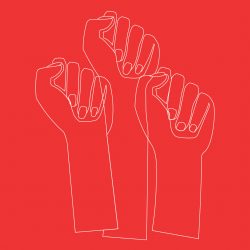Color Psychology in Branding
As humans, we are all visual creatures. In fact, color plays a more significant role in our lives than one may imagine. Color can influence how we feel, how we interact and even how we spend our money.
What is Color Psychology?
Color psychology is the study of colors concerning human behavior and decision making. When used in branding, different colors can have various impacts on the way buyers perceive a brand. For example, certain hues can increase a person’s adrenaline levels, while another color could increase appetite.
As many marketers know, colors play a significant role in consumer behavior. Take a few examples of various colors used to help brand a company or product and see how they can affect consumer behaviors.

Powerful Red
Red is a powerful and dynamic color. This color creates a sense of urgency, which is why it is so effective with sales. It also encourages appetite hence why it is often used in fast-food branding. Red is also a very energizing color that is bold on its own. Just remember to use sparingly to avoid an adverse reaction from being overbearing and create a fearful response from customers, which can result in them being cautious or avoiding your brand entirely. If you’re looking to have a powerful presence with your brand, this is your color.
Soothing Blue
Blue is known for being a reliable, responsible and noble color. It is one of the most commonly liked colors across the entire world. This color has a sense of calmness and tends to have a soothing effect. Unfortunately, it is not an overly bold color and can easily fall into the background, and if overdone, the color can be perceived as cold, distant or even unfriendly. Also, there are no naturally blue foods in nature, which is why blue is used in branding to suppress appetite. Overall, blue is a universally liked color that creates a sense of trust when building relationships, especially in branding.
Growing Green
Green is a color of nature and harmony. This color incorporates a balance of emotion and logic. It is commonly associated with nature and reflects life, wealth and growth. In contrast, green has minor negative aspects, like materialism, envy and greed. For the most part though, green has a more positive effect than most colors. If you want your brand to represent health, rest and growth, picking a settled green is a sure way to do the trick.
Luxurious Purple
Purple is commonly known for representing royalty, spirituality and mystery. It possesses the same energy and power as red but accompanied by the reliability of blue. It is an attractive color that is often used in branding to promote luxury. The only negatives are that it’s best not to use this color often because it can lead to excess and moodiness. Overall, purple is a sophisticated and imaginative color that is sure to spark some inspiration for your brand.
Joyful Yellow
Yellow is the ultimate happy, positive and joyful color out there. Anything associated with happiness is almost always yellow. It is a very powerful color. Because of its commanding presence, it is one of the easiest colors to see visibly. (In fact, this is one of the first colors that most infants respond to.) However, using too much yellow in branding can be overwhelming and cause anxiety-filled emotions. Also, using certain tents of yellow can be perceived as being dirty. Finding the right balance of yellow is a great way to portray a youthful, happy, positive and warm brand.
Unfortunately, there is still no cheat sheet for choosing the perfect color scheme to intrigue your brand’s target audience. However, many studies suggest that color does have an ultimate power of persuasion when it comes to marketing. If you would like to learn more about what hues to use for your branding, contact us today at 334.446.6149.
Posted: Oct 05, 2020




